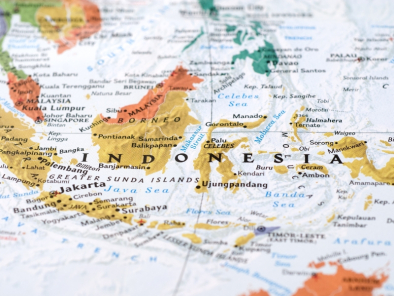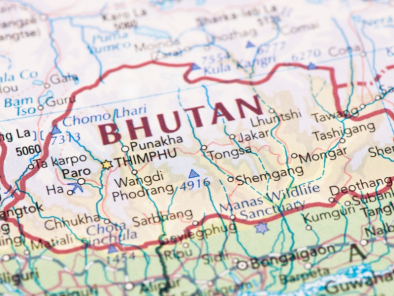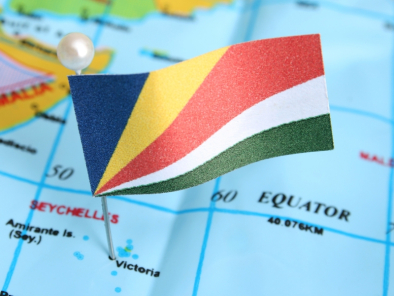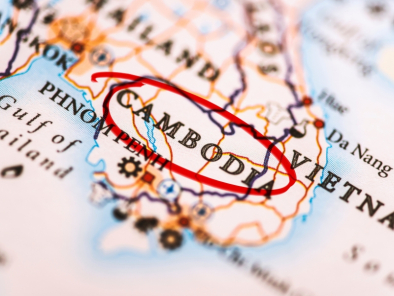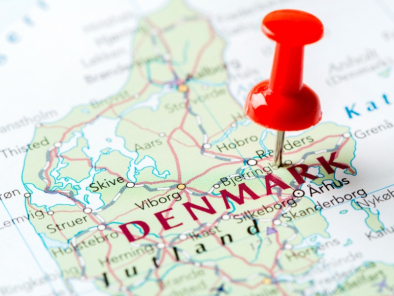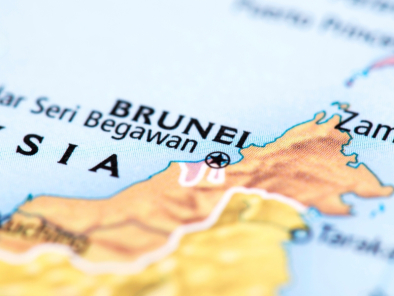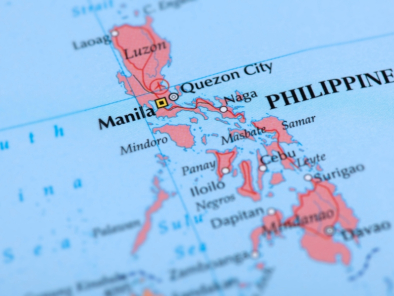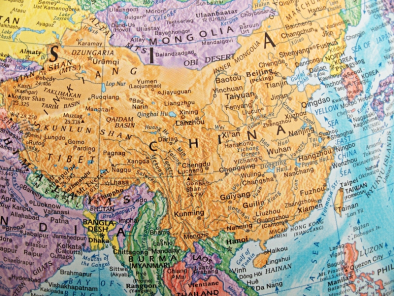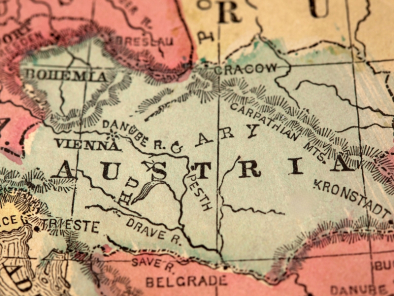
Posted by: Leo Travel Hub
CAPITAL:
VISA: The visa should be obtained prior to arrival in the country.
GETTING THERE:
By Air: Austrian Airlines (OS) has direct flights to Mumbai
& Delhi into
Train & Bus:
CURRENCY: Euro (EUR)
GETTING AROUND
Transport
systems in
By Air: Tyrolean
Airways
is the main domestic carrier and operates several flights a day between
By Train: Austrian
trains are comfortable, clean and reasonably frequent.
By Bus: The
Bundesbus (federal bus) network
supplements the rail service, and is used for local trips or to get to
out-of-the-way places rather than for long-distance travel. Some ski resorts in
By Car: Rental
car companies have branches in main cities. Roads are generally good, but
sufficient respect should be given to difficult mountain routes.
By Tram: Trams are a common feature in Austrian cities; so take care if you've never driven amongst these mechanical creatures before.
By Road or
rail:
LANGUAGE:
German and English are widely spoken.
TIME:
CLIMATE:
CLOTHING:
One should carry warm jackets, woollens, slip proof shoes, umbrella as it could rain anytime
ELECTRICITY:
The electrical current is 220 volts, AC 50 Hz. Plugs are European standard with 2 round pins.
DAILING CODE:
The dialing code is 00 43
REGIONS OF
-
- Lower
- Burgenland: Eisenstadt
- Salzburg & Land Salzburg: Zell am See,
Badgastein and Grossglockner Road.
- Upper
- Tyrol:
- Voralberg: ski resorts of Lech and Zurs, the
- Carinthia: Klagenfurt, Hochosterwitz Castle,
Velden and Villach.
- Styria:
EVENTS:
The
cycle of music festivals is unceasing. In January, New Year concerts consist of
lavish balls in
CITIES:
To/from the airport: Airport buses run
between the airport and the South Train and West Train Station (journey
time – 30 minutes).
Rail
service is available at frequent intervals to and from stations. Local rail (S-Bahn) services also run to the city center
(journey tima`e – 25 minutes).
The City Airport Train travels express
from the City Airport Terminal located at Vienna Mitte (journey time - 16
minutes). Taxis are available to the city and can be found north of the
Arrivals Hall.
A
chauffeur-driven car service is also available from the Arrival Hall.
The
best ways to see
One can travel using a Vienna Card priced at about 17 euros allows visitors to cover the city for 72hrs by subway, bus or streetcar.
MUST SEES:
The
city's famous Baroque palace is the
Open: daily 08h30-17h00 (Apr-Jun); 08h30-18h00 (Jul-Aug); 08h30-16h30 (Nov-Mar)
Schönbrunn
Zoo:
Schönbrunn Zoo is the world's oldest
and only baroque zoo. The Schönbrunn Zoo is situated in the south-eastern part
of the Habsburgs' summer residence and was built in 1760.
Tropical
Open:
daily 08h30-17h00 (Apr-Jun); 08h30-18h00 (Jul-Aug); 08h30-16h30 (Nov-Mar)
St. Stephen's Cathedral:
St. Stephen's Cathedral is situated in the city centre,
and for centuries, it has been the heart of
The Hofburg (
The
home of the Habsburgs and is a monumental repository of
The
Albertina:
An art gallery, one of the most significant museums in the world and home to major temporary exhibitions.
The
two magnificient palaces on the Belvedere grounds lie in the middle of a
splendid park. They were constructed for Prince Eugene of
Open: daily 10h00-18h00.(Wed until 21h00).
If you
want to enjoy a magnificent view over
Prater:
The Prater is
Two further
attractions in the Prater are the Vienna Wurschtlprater, a fun fair with the
Giant Ferris Wheel (Riesenrad), where one can enjoy a terrific view over Vienna
from 200 feet altitude and the Lilliputian Railroad (Liliputbahn), a 2.6 mile
amusement park line on a auge of old steam locomotives.
Fair open: daily 09h00-00h00 (most rides close Oct-Mar).
Salzkammergut:
The scenic
splendour of this rural region around
Beautiful villages such as
Wienerwald (
The
To/from
the airport: Bus line 77 connects to the Hauptbahnhof (main railway
station) in the city center (journey time – 20 minutes).
By
train: It is also possible to go by train (journey time - 15 to 20 minutes).
Taxis are available from the front of the main building (journey time – 15 minutes).
MUST SEES:
The
high point of a visit to
Open: daily, 09h00-19h30 (Jun-Aug)
Sound of Music Tour:
The Sound of Music tour: 'The
Hills are Alive with the Sound of Music'. 4 km south of
Filmed in the towns and hills of the Salkammergut the
region is replete with places recognisable to fans of the movie, so much so
that many take dedicated Sound of Music tours around the region, stopping at
important places where scenes were filmed. Most famous among them is the church at Mondsee where Maria (Julie
Andrews) married the Baron (Christopher Plummer) in the film's finale.
The fabulous facade of this massive church must be among the most photographed sights in the whole of the region, and in summer there is a permanent crowd of movie fans around the square in front.
This hunting castle was built in the early 17th
century by Prince-Archbishop Markus Sittikus. In the gardens the glass
pavillion was reconstructed for the pleasure of those fans still returning
after 30 yearsThe
grounds contain ingenious trick fountains and water-powered figures thanks to
the bishop's strange fascination with soaking unsuspecting visitors.
The Mirabell Gardens were laid out in the 18th century. Maria and the children
were seen dancing around the statue of Pegasus, the winged horse, and
throughout the gardens singing 'Do-Re-Mi'.
Open:
Tue-Sat 09h00-12h00 & 14h00-17h00; Sun 10h00-13h00
The front side of the castle was used as the Trapp family home, the children
were boating on the
Nonnberg Abbey
Nonnberg Abbey is the oldest convent in the German
speaking part of
St.Gilgen and
Scenery shown at the beginning of the movie was filmed at
In Mondsee Cathedral the film wedding between Julie
Andrews as Maria and Christopher Plummer as the Baron took place.
Salzburg City Sightseeing Tour including the reopened
Mozart Residence. Over the centuries, the Prince Archbishops represented the worldly
and clerical power in their own independent principality. Many impressive
monuments still stand witness to their reign. Renowned architects and artists
worked throughout the centuries to create architectural jewels. Since the 18th
century until today, you can hear the sound of Mozart's
Magic Flute and other famous compositions between those historic
walls. Panorama Tours give you an insight into the Gothic, Renaissance and
Baroque aspects of the city as Mozart saw it. You can also visit the newly reopened
Mozart Residence, on
Open: Tue-Sun 10h00-17h00
Salt Mines:
Along the Königseeache valley, through the Bavarian
mountains, past romantic farmhouses and the ruins of Obersalzberg - Hitler's
former mountain retreat - we arrive at the highlight of the journey, the
450-year-old Saltmines.
Wearing the traditional miners' clothing, you enter the mines and hear the
historical as well as the legendary tales of the fascinating underground world.
Using the same slides as hundreds of miners before you, you go down a
100-foot-long slide into the grottos, the magical world beneath the surface of
the earth. With a raft ride on the salt lake and a miniature train ride we end
our romantic and educational adventure.
Afterwards you have the chance to regain your strength with some Bavarian
specialities during a stop in
View of Hitler's 'Eagle's Nest'. Magnificent views across the snow-capped peaks of the Bavarian mountains.
Ice
Caves/Eisriesenwelt:
1600m above sea level in the higher ground south of
The ice that lines the walls has contorted itself into
tortuously twisted shapes, and translucent stalactites and stalagmites turn the
entire cave complex into a wondrous crystal garden. Take the tour and you'll
see the light of your torches reflected and refracted in the marvellous
crystalline structures. The caves are only open from May-Oct, but even through
the summer the temperature is zero degrees in some parts, so make sure you wear
appropriate gear, no matter what the weather outside.
The caves are located around 40km from
The most economical way to enjoy Salzburg for 24, 48 or 72hrs, providing free admission to all of the city’s attractions, free use of public transport and a no. of other discounts.
Tirol
Alpine delight in the heart of
Tirol
is the centre of Europe, shares its border with
The beauty of the landscape, the cultural sights and the friendliness of the local people not only attract over 8 million visitors from all over the world per year, but also filmmakers. Building in the Romanesque, Gothic and Baroque style constitute treasure seldom found in such variety elsewhere. Churches, abbeys, castle and fortresses comprises an integral part of the Alpine environment, meaning that in Tirol, nature and culture forge together in a stimulating symbiosis.
Where
town meets nature,
One
can go for a stroll down Innsbruck’s major shopping street Maria-Theresien-Strasse,
take a coffee break in one of the old town’s cosy cafes, experience the
exhilaration of skiing on Olympic runs, relax and breathe deeply walking
through deserted forests and then round off the day with a graceful performance
of internationally renowned ballet dancer.
In
summer, sporty types simply switch from skis to mountain bikes or just set off
into one of the many hiking areas.
Getting there:
The journey time from
Getting Around
The most economical way to enjoy Innsbruck for 24, 48 or 72hrs, providing free admission to all of the city’s attractions, free use of public transport and a no. of other discounts.
Must Sees:
Golden
Roof
The Golden Roof is Innsbruck´s greatest tourist attraction, built by Archduke Friedrich IV in the early 15th century as the residence of the Tirolean sovereigns. The Golden Roof is the three-story balcony on this house at the heart of Innsbruck´s Old Town. The late Gothic oriels are capped with 2,600 gold-plated copper tiles. It was constructed for Emperor Maximilian I to serve as a royal box where he could sit in luxury and enjoy tournaments in the square below.
The "
The
The bell foundry is the region of the Grassmayr Family that has been casting bells for the whole world for 14 generations with 400 years of experience, history and tradition to build upon. In the Casting Hall, bell forms of loam are modeled in accord with the age-old customs of traditional craftsmanship.
The
From
The
Sound Room:
The sound room offers an acoustical adventure through the tones of bells become visible, audible and palpable.
The
Nearby you can find the Hofkirche, built in memorium to Maximilian I and
containinng his mausoleum, a sombre but impressive structure in black marble.
Open: daily 09h00-17h00.
Swarovski
Crystal Worlds:
The Swarovski Crystal Worlds
are situated by car just a few minutes away from
Kristallwelten
Shuttle:
The
Kristallwelten Shuttle takes guests four times daily from
Transfer and admission are free of charge for holders of a
valid Innsbruck Card and for members of the Swarovski Crystal Society with a
valid SCS Card.
Opening Hours:
Daily from 0900 – 1830 hours. Last admission at 1730 hours
24
Dec 2007 and 31 Dec 2007 until 1500 hours
Other Attractions:
Seefeld, Igls, Holiday villages, Stubai Glacier, Achensee Boat trip, Schwaz Silver Mine, Riedel Glassworks, Tirolean Farmstead Museum, Tirolean Folk Show
Reidel Glass Factory: 40mins away from
Zellamsee:
1 and half hrs from
Mutters:
The most
beautiful village in the
Narrow streets
of houses adorned with flower-strewn balconies lead to the village square with
a well in its centre, creating an almost unreal atmosphere of a perfect Alpine
village. All this character and quaintness is intensified by the horse-drawn
carriages that take visitors on trips out to the surrounding countryside.
The village is
just 5km south of
Famed for its year-round skiing, the Stubai region
with its impressive glacier less than 40km south-west of
Comprising the four villages of Fulpmes, Mieders,
Schönberg and Telfes, the area is a great winter playground, still within easy
reach of
SHOPPING:
If you have, a passion for shopping then you will love
wandering through
Salzburg
Goldgasse:
The Goldgasse leads you to the Residenzplatz from the Judengasse and it honors its name. There are many gold and jewellery stores as well as antique shops.
Münzgasse
and Griesgasse:
Clothes,
shoes, bags - everything your heart desires. Apart from the trendy stores
like Rieger or
Linzergasse:
This shopping street is just as modern but not so busy. Not only boutiques and an entire row of shoe shops but this street also has music and stationery shops as well as shops selling traditional gingerbreads, candles and wax figurines.
Vat Refund:
Indian tourists purchasing goods in excess of 90 euros in one store at one time will be refunded the Value Added Tax of aprriox 13% upon leaving the country. The shopkeeper has to to be asked the requiste tax free cheque form.
Vienna Malls and Department Stores
Kohlmarket
and Graben
Karlplatze
Maria
hilfe Strasse
Flee markets- on weekends
Gasometer
11, Guglgasse, Tel: 743 6430, Fax:
743 6430-30,
Open: 10am-7.30pm Mon-Fri, 9am-5pm Sat
Generali-Center
Mariahilferstraße 77, A-1060 Wien, Tel: 586 3024, Fax: 586 3024-14,
Gerngross
Mariahilfer Straße 38-40,
Alt Wiener Flohmarkt (Flea market )
Kettenbrückengasse, A-1050, U-Bahn: Kettenbrückengasse,
FOOD:
Lunch is usually served from 12 noon to 2pm and
dinner from 6pm to 10pm,
Gratuities are expected.

